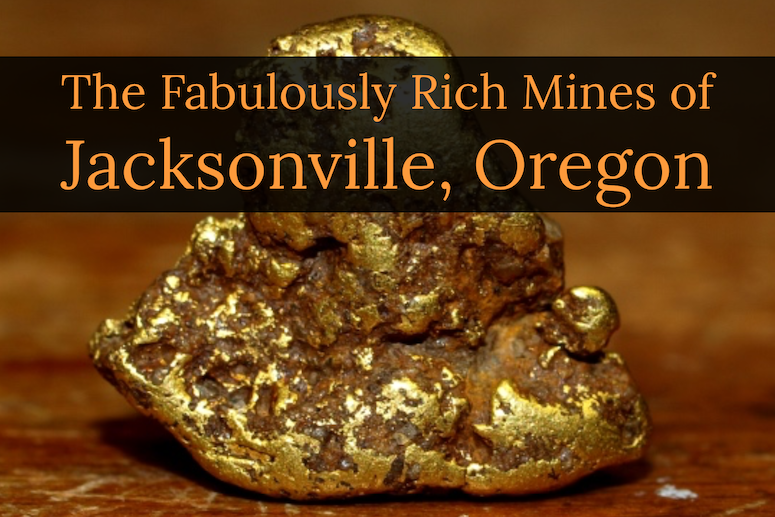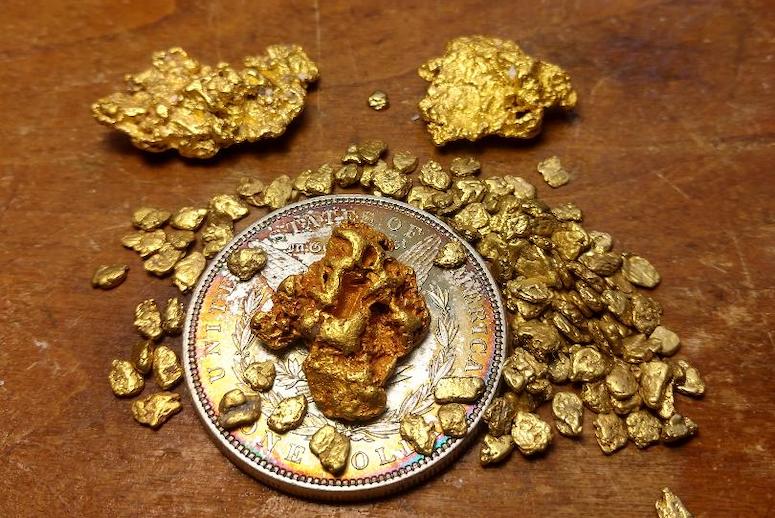
Some five miles west of Medford, Jacksonville is a small town in Jackson County, Oregon. Its origin dates back to the 1850s when placer gold was found in Jackson Creek. The creek flows through Jacksonville, and it also inspired the name of the city.
For nearly three decades after the city was established, Jacksonville was known for its gold mining. When the gold rush subsided, some of the residents and new arrivals started focusing on agriculture and other endeavors. But GOLD is what put Jacksonville on the map.
The Rich Gulch and Start of a New City
The news of gold in Josephine Creek attracted prospectors from all around the world. Many ventured north from the goldfields of California.
In late 1851 or early 1852, James Cluggage and John Poole were on their way to Sacramento. They operated a company named Jackass Freight. Near the current town of Jacksonville, the two men halted on their way to their destination. They traveled to a gulch near Daisy Creek to water their livestock.
They dug a hole to fill it with water for their mules to drink. In the process, the two men accidental discovered one of the largest gold deposits in the state.
They promptly named the place as Rich Gulch and widened the area of search to the nearby Jackson Creek. Among the gravel, the two men found large deposits of placer gold.

They had bigger plans for the area. They filed a claim on the adjoining lands. John Poole sought 306 acres and James Cluggage filed for 160 acres. With the allotted land, they began planning a town. They had big ambitions and foresight.
The new gold mining location and the town drew in miners in large numbers. In the following years, the city grew considerably. Soon Jacksonville became larger than Salem, the capital city of Oregon.
Around the city, miners found several new gold deposits. Daisy and Jackson Creek were always crowded with prospectors looking for gold. A huge amount of gold was found in the form of dust and nuggets.
All the gold, extracted from the surrounding areas made way to Jacksonville. The gold in and around Jacksonville made the miners and merchants very rich.
Notable People and Events in Jacksonville
Cornelius C. Beekman was one of the richest and most interesting residents of the city. A banker by profession, he established the Beekman Bank in Jacksonville.
The bank became the first in the United States to charge clients for its banking services without paying any interest. When the bank was in operation, it’s estimated that over $10 million worth of gold passed through their hands.
Many residents of Jacksonville became famous. One notable person who came for gold but developed a passion for photography was Peter Britt. He was so charmed by the new city that he became the city’s chronicler. He decided to save the sights, landscapes, lives, and legends of the place for posterity. Every summer, the city celebrates its famous resident by conducting a concert series called the Britt Festival in his former estate.
It was in Jacksonville that Mettie Collins brought his gold nugget to sell. In 1859, Collins found a large gold nugget while mining on nearby Althouse Creek. Weighing around 17 pounds, it is believed to be the largest nugget every found in Oregon.
After its discovery, Collins feared for his life and safety of the gold every minute. He hired a person and both set out to transport the gold nugget. After constant fear throughout his journey, Collins reached Jacksonville where the nugget was sold to a smelter for $3500. With that much money in hand, Collins celebrated his success by drinking himself to death.
Jacksonville: A National Historic Landmark
The Jacksonville Historic District – a National Historic Landmark now – was at the center of the boom during the gold mining days from 1852 to 1884. It was a center of intense activity; labeled as the mining, commercial, the financial, and civic hub of the county.
Although gold mining slowly faded and other activities took precedence, the city is known even today for its rich gold mining history. The residents of Jacksonville have preserved their heritage. Much of the buildings built during that time still exist.
After the 1880s, many of the buildings were neglected. But due to the efforts of the residents in the 1960s, the state decided to preserve more than 100 buildings and declare them as a National Historic Landmark. Many of the buildings still carry the names of the families and founders. Nowadays, visitors can also take a virtual tour of the area.
Gold Left Behind
Enthusiasts still flock to Southern Oregon to try their luck at gold panning. The most popular places that attract gold prospectors are Tunnel Ridge, Little Applegate, Hellgate Recreation Area, and Gold Nugget Waysides. These areas are within the Medford District.
The area around Jacksonville still has a lot of gold. Just be aware that there is a lot of private ground, and much of the public land is all claimed up.
Next: 12 of the Richest Gold Mines in Oregon

